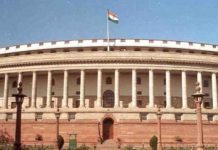India has a significant quantum capability gap to close: A new assessment of India’s potential in quantum technologies has revealed that, while the country made the right decision in launching the Rs 6,000 crore National Quantum Mission to develop some of the most sought-after technologies for the future, it would still need to close the sizable gap between its capabilities and those of other leading nations in these fields, such as China and the United States.
According to an evaluation by Itihaasa, a non-profit organisation that tracks the nation’s technological and business developments, India is only one of 17 nations with a government programme specifically designed to support quantum technology research, and one of only 12 that has made distinct investments in this area. However, a few of nations were far ahead of India in terms of both their present capabilities and the amount of money dedicated to research and development.
Over a five-year period, India’s Rs 6,000 crore is equivalent to roughly USD 0.75 billion. However, it was predicted that China was investing USD 15 billion in the development of quantum technology. The countries with the highest amounts are the United States ($3.75), Germany ($3.3 billion), South Korea ($2.35 billion), and the United Kingdom ($4.3 billion).
In terms of publications in prestigious journals and patents acquired in the field of quantum technology, India lagged well behind the US and China.
It is praiseworthy that India is one of the top 12 nations in terms of committed investments and one of the 17 nations with official national quantum missions. The evaluation stated, “At the same time, we must acknowledge that India is falling behind the world leaders in quantum technologies and needs to step up both R&D and translational aspects to catch up with them.”
By taking advantage of the incredibly strange and counterintuitive, yet incredibly unique qualities of subatomic particles like an electron, quantum technologies are able to create devices and processes with capacities and efficiencies that are not achievable with classical, non-quantum systems. For example, a quantum computer can complete tasks that a conventional computer, no matter how quick or powerful, might not be able to complete in a time that is practical.
When quantum technologies reach maturity, they will likely disrupt nearly every industry. However, computing, communications, encryption, cybersecurity, and healthcare are some of the industries that stand to benefit the most and be affected first. The majority of technologies are still in the development stage, and scientists need to fully control how subatomic particles behave in order to extract valuable work.
Launched last year, India’s National Quantum Mission seeks to advance capabilities in four domains: communications, sensors and metrology (the science of measurements), materials, and quantum computing.
In roughly five years, India has a very real potential of becoming a global leader in at least two of these areas—communications and sensing, according to Abhay Karandikar, Secretary of the Department of Science and Technology, which is carrying out the quantum mission.
“We already possess fairly sophisticated skills in both domains (sensing and quantum communications). Even a couple of our start-ups are producing excellent work. We ought to be in the lead globally with a little prodding. Other technologies might require far more labour from us, such as quantum computing. But in none of these areas are we beginning at zero. We would be in the top five, 10, or fifteen wherever, he declared.
According to Principal Scientific Advisor Ajay Sood, there is not insurmountable distance separating India from other developed nations.
We might be a year behind in some regions. We may be four or five years behind in certain areas. We are on par with the greatest in the world in certain areas. Because the benefits of these technologies will be revolutionary, we must put in a lot of effort over the coming years, Sood stated.
According to the evaluation report, large institutes and institutions are already employing 110–145 Indian researchers at the principle investigator level to work on quantum technologies. They were collaborating with roughly 300–400 PhD students and 75–100 post-docs. Additionally, there were between fifty and one hundred MTech students studying various quantum technology-related subjects.
According to the study, India was, incidentally, producing the greatest number of graduates in fields linked to quantum technologies. These comprised courses in mathematics, statistics, physics, chemistry, biochemistry, electronics, and chemical engineering. Each year, more than 82,000 students received their diplomas in these fields. The only region with a bigger student population in these categories was the European Union as a whole.
According to the evaluation, “these graduates will still need focused training on various aspects of quantum technologies to make them a relevant workforce in the field.”
It recommended that the government look into the idea of supporting a special science and technology cadre, like to the ones in India’s space and nuclear sectors, in each of the four domains designated for the National Quantum Mission.




































